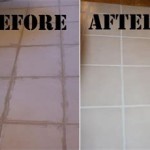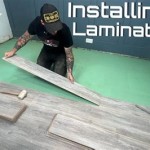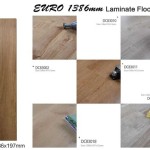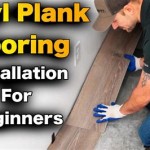How To Replace A Single Floor Board
Damaged floorboards detract from a room's aesthetic and can pose safety hazards. Fortunately, replacing a single floorboard is often a manageable DIY project. This article provides a step-by-step guide to replacing a single floorboard, empowering homeowners to tackle this repair effectively.
Tools and Materials Required: Before beginning the project, gather the necessary tools and materials. This includes a circular saw, pry bar, hammer, chisel, safety glasses, gloves, measuring tape, pencil, replacement floorboard, wood glue, finishing nails, and a nail set.
Step 1: Safety First: Always prioritize safety. Wear appropriate safety glasses and work gloves throughout the process. Ensure the work area is well-ventilated, especially when working with wood dust. Disconnect power to any electrical outlets in the immediate vicinity.
Step 2: Assessing the Damage: Carefully examine the damaged floorboard to determine the extent of the damage. This assessment will inform the repair strategy. If the damage is localized, a partial replacement might suffice. However, significant damage necessitates replacing the entire board.
Step 3: Locating the Joists: Floorboards are typically nailed to joists. Use a stud finder to locate the joists beneath the damaged board. Mark the joist locations on the surface of the damaged board with a pencil. This step is crucial for accurate cutting and secure fastening of the replacement board.
Step 4: Cutting the Damaged Board: Set the circular saw blade depth to the thickness of the floorboard. Cut along the length of the damaged board, slightly inside the marked joist locations. Make two parallel cuts, effectively creating a channel for removal. Exercise caution to avoid cutting too deep and damaging the subfloor.
Step 5: Removing the Damaged Sections: Using a chisel and hammer, carefully remove the cut sections of the damaged floorboard. Start at the edges and work towards the center. A pry bar can assist in lifting stubborn pieces. Exercise care not to damage the surrounding boards.
Step 6: Preparing the Replacement Board: Measure the dimensions of the removed section and accurately transfer these measurements to the replacement floorboard. Cut the replacement board to the correct size, ensuring a snug fit. It's advisable to test fit the replacement board before proceeding to the next step.
Step 7: Applying Adhesive: Apply a thin, even layer of wood glue to the exposed joists where the replacement board will be placed. This provides additional stability and reduces squeaking.
Step 8: Installing the Replacement Board: Carefully position the replacement board in the opening, ensuring it aligns seamlessly with the surrounding floorboards. Use a hammer and finishing nails to secure the replacement board to the joists. Space the nails evenly along the joists. A nail set can be used to countersink the nails, creating a smooth surface.
Step 9: Filling Nail Holes: Once the replacement board is securely fastened, fill the nail holes with wood filler. This creates a uniform appearance and prepares the surface for finishing.
Step 10: Sanding and Finishing: After the wood filler dries, sand the repaired area smooth. Apply a matching stain and sealant to blend the replacement board with the existing flooring. Follow the manufacturer's instructions for drying times.
Addressing Specific Challenges: Tongue and groove flooring requires slightly different techniques. The lower lip of the groove on the replacement board may need to be removed for proper installation. Similarly, end-matching boards may require careful cutting and fitting to ensure tight joints. For particularly stubborn boards, a reciprocating saw can be used for removal, though extreme caution is needed to avoid damaging surrounding areas.
Considering Professional Assistance: While replacing a single floorboard is often achievable for DIY enthusiasts, complex repairs or extensive damage may necessitate professional assistance. Consulting a qualified flooring contractor can ensure proper assessment and effective repair, ultimately prolonging the life and enhancing the appearance of the flooring.

How To Remove A Single Piece Of Hardwood Flooring The Art Doing Stuff

How To Remove A Single Piece Of Hardwood Flooring The Art Doing Stuff

Removing Replacing A Damaged Hardwood Flooring Board

Replacing A Hardwood Flooring Board

How To Replace Damaged Floor Boards

How To Replace A Damaged Laminate Board That S In The Middle Of Floor

Boen Repair Tips How To Replace A Single Hardwood Flooring Board

How To Replace Flooring Floor Experts Tips On Replacement

Wood Flooring Repair Board Replacement How To Replace One Plank Of Floor Laminate Vinyl

Wood Flooring Repair Board Replacement How To Replace One Plank Of Floor Laminate Vinyl
See Also






